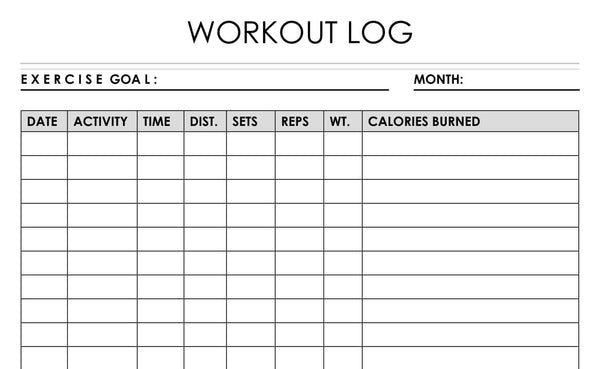I’ve written in other posts and in Fit by 50 that I don’t believe fitness should involve doing math homework every time you eat. But if you’ve never tracked your calories or macros – ever – I do highly recommend it, at least in the short term. Most people discover that their daily sugar/carbohydrate intake is higher, and their protein intake lower, than they would have guessed.
The same is true with training. I see people at my gym who have been working out regularly for months or even years, but they never progress. They look exactly the same year in and year out. That’s fine if you’re in the shape you want to be in and are simply maintaining it, but if your goal is to add muscle and/or lose fat, then obviously just showing up and moving things around isn’t working.
The problem: you have a training routine that is exactly that – routine.
This is not to say that you should be switching exercises and programs constantly but that you should be focused on progression within whatever program you’re using. In a typical pyramid program – four sets of 12, 10, 8, and 6 reps respectively – it’s easy to fall into the trap of choosing weights that will allow you to hit those numbers. For example, if you know you can curl a 30-pound dumbbell six times after working up to that weight through three sets, you may – perhaps even subconsciously – use lower weights than you’re capable of in order to hit the target number of reps (which begs the question – why do the first three sets at all? – but that’s a subject for another post). You then dutifully write in your log that you did the sets and reps prescribed. Mission accomplished, right?
But the principle of this type of scheme is not the numbers 12, 10, 8, and 6. The principle is that increasing the weight sufficiently will not allow you to do the same number of reps in each set. As long as you’re reaching the point where another rep can’t be done, the exact number of reps doesn’t matter. If you’re just sticking to the scheme week in and week out, you’re letting your log/app tell you what to do.
Tell it what you did.
The bottom line is that the body adapts very quickly and needs to be challenged regularly to make progress. There are several ways to increase the load on a muscle aside from adding weight, but here I’ll keep it simple: the next time you hit that 6th rep, do a 7th one. If you can’t, OK, keep that weight until you can, then raise it until you can’t. Repeat.
Thanks for reading,
Dan
Get your free eBook.
Get Training.








